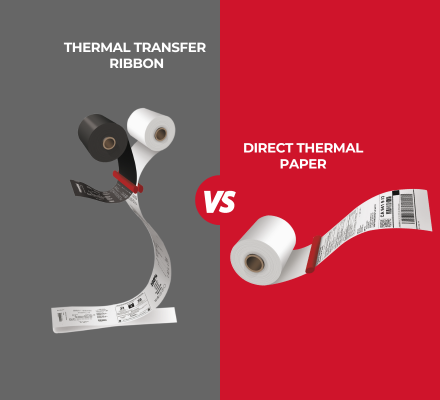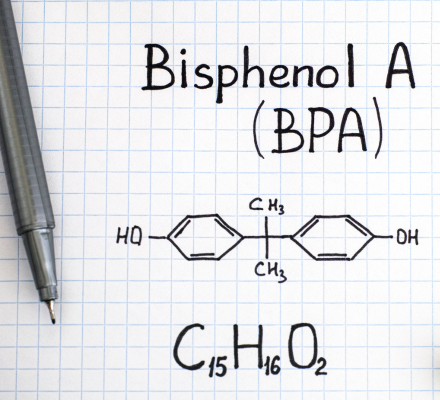How new MOAH/MOSH regulations impact your business
What are MOAH & MOSH?
According to the European Food Safety Authority (EFSA), MOAH (Mineral Oil Aromatic Hydrocarbons) and MOSH (Mineral Oil Saturated Hydrocarbons) are two groups of hydrocarbon compounds derived from Mineral Oil Hydrocarbons (MOH).
These compounds are commonly found in printing inks, lubricants, and additives used in the production of paper, labels, and cardboard. They are often described as capable of migrating into food throughout the production process, raising health safety concerns.
The role of MOAH & MOSH in labels and packaging
| Role | Details |
| Additive in thermal transfer ribbons | Color support agent adjusts melting temperature, and ink viscosity |
| Ensures print quality | Surface coating determines durability and image resistance |
| Enhances material compatibility | Helps thermal transfer ribbons to be compatible with various materials |
| Adjusts adhesive viscosity | Improves adhesion and durability of glue under various conditions |
| Anti-electrostatic discharge | Helps reduce charge accumulation during production and use |
| Aids in ink preservation | Moisture-resistant agent |

Summary of new regulations on MOAH/MOSH
Subjects of application
- Manufacturers (including producers, importers, distributors)
- Users
- Waste management units
- Local government authorities responsible for waste management
- Publishers of press publications
- Approved ecological organizations in the field of responsibility related to household packaging and graphic paper producers
Subject
- Mineral oil substances prohibited for use in packaging and printing for distribution (paper, thermal transfer ribbons).
Effective date
| Substance | Requirement | Effective Date |
| MOAH consisting of 1 to 7 aromatic rings | ≤ 1.0% | January 1, 2023 |
| ≤ 0.1% và 1 ppm MOAH compounds containing 3 to 7 aromatic rings | January 1, 2025 | |
| MOSH consisting of 16 to 35 carbon atoms | ≤ 0.1% | January 1, 2025 |
Note: According to SGS, packaging & printing materials that have been produced or imported before each effective deadline, as mentioned in the MOAH/MOSH regulation summary, must be processed within 12 months from that deadline.
Risks businesses may face
At this point, the question arises: What will happen if your business "ignores" this new regulation on MOAH/MOSH? The answer could be:
| Legal Risks | Financial Risks |
|
|

Multi-dimensional perspective & Future forecast of the regulation
The trend of expanding new MOAH/MOSH regulations in the EU
The European Union is a highly unified organization operating not only on an economic foundation but also as a community with many common goals and values aimed at peace and sustainable development.
France is among the top 3 member countries actively involved in shaping the development direction for the entire union. Therefore, with France issuing new regulations on MOAH/MOSH compound compliance, it can be said that in the near future, other members will likely apply similar regulations on MOAH/MOSH.
Some movements of European countries related to mineral oil compounds (MOH) include:
- The Spanish Food Safety and Nutrition Agency (AESAN) announced that it will implement appropriate risk management measures on MOAH/MOSH based on EFSA regulations
- The Netherlands Food and Consumer Product Safety Authority (NVWA) announced a temporary enforcement policy for MOAH in food from January 1, 2024
- The Rapid Alert System for Food and Feed (RASFF) has recorded 31 notifications related to MOAH/MOSH since February 4, 2020

MOAH/MOSH mineral oil compounds have become and continue to be a concern in Europe and will be widely applied across many industries. Therefore, the trend of using materials compliant with MOAH/MOSH regulations will become prevalent starting from today.
Long-term impact on the food industry
Some changes that may occur in the food industry include:
- Supply chain order adjustment: To ensure that raw materials meet MOAH/MOSH standards, buyers need to request relevant certificates from sellers to ensure a reliable and sustainable traceability process.
- Changes in production processes: According to EFSA, 2-5% of annual revenue will be invested in production to comply with regulations, so it can be said that there will be major innovations in production processes.
- Creating more business opportunities: Businesses that prepare early for these regulations will be able to create a significant competitive advantage.
- Raising output standards: MOAH/MOSH-compliant packaging and printing solutions will "rise to the top". Accordingly, printing and labeling processes will also be emphasized in material selection to comply with MOAH/MOSH.
Contact Ricoh IMS Vietnam now for more advice on printing technology that complies with new MOAH/MOSH regulations.

Benefits of early compliance with new MOAH/MOSH regulations
- Enhance brand reputation: The business will be seen as a pioneer in ensuring food safety, thereby gaining consumer trust in products. At the same time, it improves relationships with business partners and regulatory agencies.
- Expand business opportunities: Easily expand markets not only in European countries but also in other demanding markets. Gain negotiation advantages with large retail chains that prioritize food safety.
- Long-term cost savings: Although initial investment costs are unavoidable, it will help your company avoid legal risks and reduce inspection fees when passing through customs (common if the business is subject to enhanced surveillance sanctions).In addition, increased efficiency helps optimize business costs.
Printing solutions from Ricoh
With the new regulations on limiting mineral oil content in printing materials, Ricoh proposes to businesses a solution with two Ricoh thermal transfer ribbon lines that comply with the 0.1% MOAH/MOSH standard below:
B110CR – Extreme Durable Resin
- MOAH(1-7 Ar) ≤ 0.1%, MOAH(3-7 Ar) ≤ 1ppm, MOSH (C16 - C35) ≤ 0.1%
- High-resolution images with small barcodes and characters
- Superior resistance to heat 200°C, chemicals, and solvents
- Safety Certificates: RoHS, REACH, UL, MSDS, HF
- Suitable for manufacturing, electronics, chemicals, pharmaceuticals, food, and garment,...

B110A – Extreme Durable Wax Resin
- MOAH(1-7 Ar) content ≤ 0.1%, MOAH(3-7 Ar) ≤ 1ppm, MOSH (C16 - C35) ≤ 0.1%
- Good resistance to friction and chemicals, heat resistant to 120°C
- Superior print quality and limited thermal transfer ribbon peeling
- Minimizes electrostatic problems

Comprehensive barcode label solution
In addition, customers who need to set up a label solution system (hardware, software) can contact Ricoh for advice on the most optimal and suitable solution for their business needs via [email protected] or +84 28 3528 5252
Why choose Ricoh Thermal Transfer Ribbons
- Complies with international standards, recognized through RoHS, REACH certificates, etc.
- Superior quality proven since 1989
- Customizable product sizes and flexible MOQ
- Quick and timely support team in Vietnam
Conclusion
Exporting food to Europe has perhaps long been an important part of the business plan for many companies due to the huge consumption demand and profits this market brings. However, along with these benefits, Europe has always been famous as a "demanding market" with many complex regulations and standards that make it difficult for businesses, typically the new regulations on MOAH/MOSH directly affecting packaging and labeling as presented above.
Contact Ricoh now for advice on suitable solutions to gain an advantage in the race to meet food export requirements to Europe.
Ready To Explore The MOAH/MOSH - Compliance Label Printing Solution?
Discover more about the MOAH/MOSH compliance thermal transfer ribbon for food industry as the key to demanding market
Chat via Zalo
Let’s connect
Get in touch with one of our consultants and find out how we can help you to implement a barcode system
Recommended resources for you
.png)
Things You Should Know About Warehouse Management in 2024
Discover the top trend of warehouse management in 2024

Direct Thermal or Thermal Transfer: Which One To Choose?
This article will provide step-by-step guidance to help you navigate the world of thermal printing technology.



